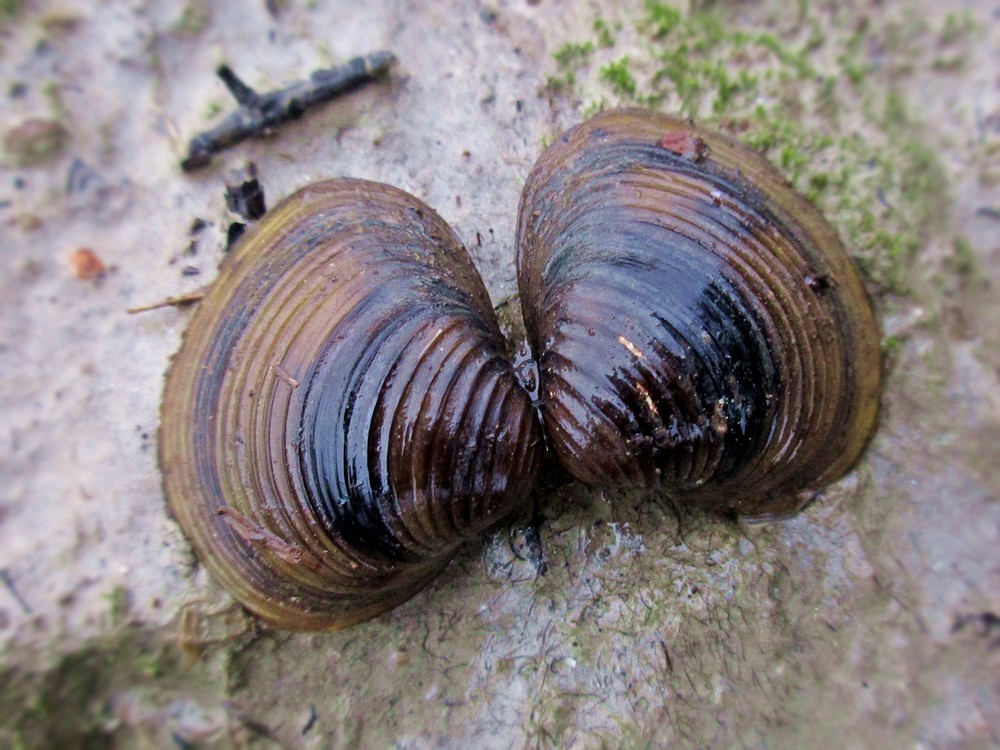Asian Clam

Asian Clam
(Corbicula fluminea )
Tags: Aquatic
Identification and Reproduction
Identification:
- Asian clam is a freshwater clam, originating from Southeast Asia.
- They have small triangular shells that tend to be less than 2.5 cm across, but under certain conditions they can grow up to 6.5 cm.
- Their shells have elevated growth rings.

- These clams have a muscular foot, which enables them move.
- They have two different colour morphs; yellow-green to light brown or a dark brown shell colouration. Lighter morphs will be white inside and the dark-brown clams will be dark brown or purple inside.
Reproduction:
- Asian clams are hermaphroditic; each clam possesses both sexual organs and can self-fertilize.
- The presence of a single Asian clam can result in an infestation, rapidly reproducing to dense populations between 10,000 to 20,000 per square meter.
- A single clam can result in 400 juveniles a day.
- Larvae that is released in the early spring can reach sexual maturity by the fall.
- Spawning can take place all year round if water temperatures exceed 16oC.
Habitat & Ecology
- Asian clams are found in lakes and streams that are silty, muddy or gravely.
- They prefer fine or coarse sands.
- Typically found in flowing water as they thrive in high levels of dissolved oxygen.
- They can withstand water temperatures between 2 to 30oC
- They are intolerant to pollution.
- These clams have a lifespan between 1-7 years.
Impacts
- Infestations of Asian clams will clog water intake pipes and filters. They will attach, breed and die, leaving live clams, empty shells and dead body tissue.
- Results in million dollars of damages to the power and water industry.
- Will negatively impact recreation and tourism.
- They will compete with native clams and other native filter feeders for food and shelter.
- Asian clams are also carriers of parasites that are dangerous to humans.
- Able to consume up to 70% of phytoplankton populations from waterbodies.
Management
- Report if you think you have seen the Asian clam.
- Clean, drain and dry your watercraft and gear before moving from one waterbody to another.
- Do not release live specimens into natural waterbodies.
Resources
Download the BC Invasive Species Alert for the Asian Clam here.
Download the Alberta Invasive Species Council's factsheet for Asian Clam here.
Header photo (Björn S.).




